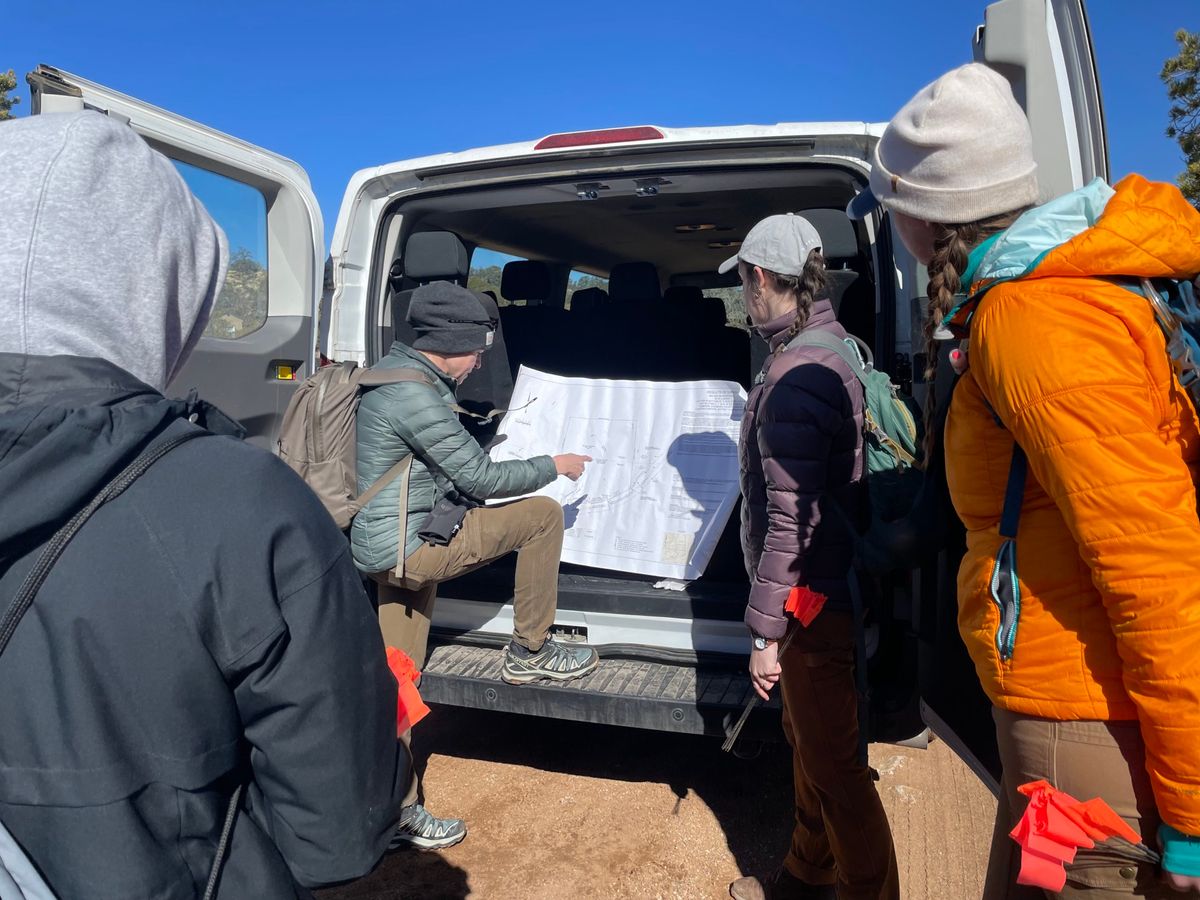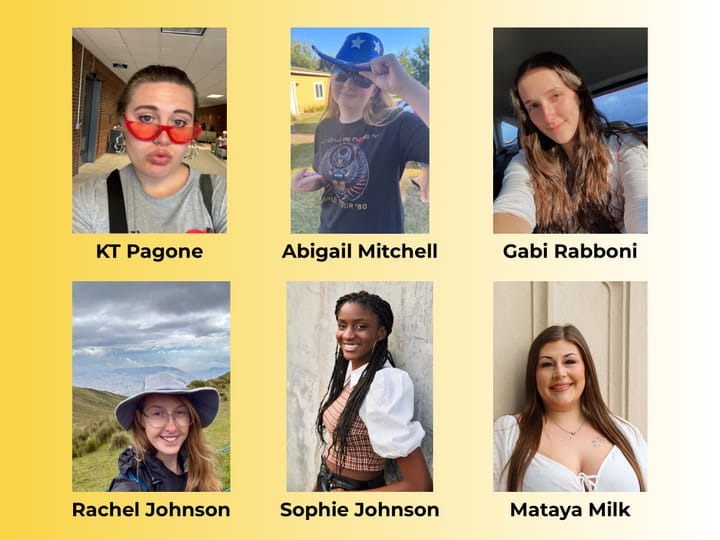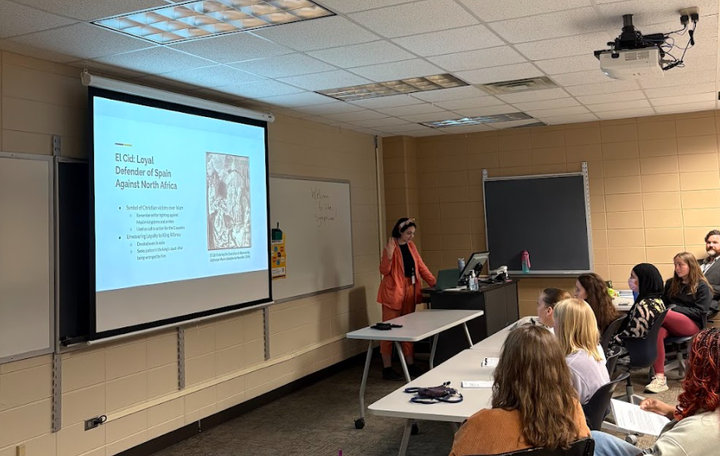Perspective: Students travel to the Southwest to survey Navajo sites

On the Monday morning of spring break, I awoke to the soft hum of a not-yet-familiar propane heater that kept the chilly air away from the five other people asleep in their sleeping bags. I peaked out the window above my cot and watched snowflakes float past, illuminated by the rosey dawn of northern Arizona.
I had the opportunity to embark on an adventure to conduct field surveys and learn about Indigenous cultures in that area along with other anthropology students and graduates. We arrived on the Diné reservation, known broadly as the Navajo reservation, on Sunday after a grueling two full days of van travel. Two hooghans — traditional living and ceremonial spaces for Diné — greeted our bedraggled crew.
Over the next week, we traveled to Flagstaff monuments such as Grand Canyon, Walnut Canyon and Walkup. Faculty adviser for the trip professor K.C. Carlson introduced us to a few of her former colleagues and friends who are Diné and Hopi archaeologists. She worked as a national park archaeologist in the Southwest before coming to teach at Augustana University.
“I hope the students learned how independent and capable they are as individuals and as a group,” Carlson said. “I think many of [them] were terrified at the prospect of living off grid with no running water in a foreign place for a week. But, even in constant snow, [they] all handled it like pros.”
For most of the trip, snow covered the red soil and desert plants. Fortunately, we were able to conduct a site survey where the snow had briefly disappeared. Under the guidance of Carlson, we lined up five meters apart and walked with our eyes glued to the ground, searching for artifacts on the surface. Some students had their first experience in the field.
One of the people Carlson introduced us to was Jason Nez, a Diné fire archaeologist of the Grand Canyon National Park Service. He identifies and protects archaeological sites from wildfire management damage. Nez talked to the group about his love for archaeology and balancing it with Diné traditions and beliefs. One of Carlson’s goals was to connect students with Indigenous archaeologists.
“I hope they have a wider understanding of Navajo and Hopi cultures and a fuller understanding of how colonialism still impacts those cultures into the modern era,” Carlson said.
The bigger picture Carlson talked about refers to Indigenous tribes’ relationships with the United States government, each other and Western culture as a whole.
Senior Annika Potratz said the trip brought her closer to different Indigenous cultures in the Southwest.
“During the trip, our group was able to interact with both the Diné and Hopi tribes, which further allowed us to understand their history and historical impacts. I will continue to pursue my passion in anthropology to provide culturally competent care to those in need due to this experience.”
Potratz said her experience during break expanded her outlook in anthropology. She hopes to use what she learned as a tool in her future career as an anthropologist.
For me, the trip to the Southwest painted a more vivid picture of the impact archaeology and anthropology has on communities. When I was able to ask archaeologists questions about their experiences and motivation to continue in the field, I saw a reflection of my own curiosity. They keep their candle burning for the sake of learning and connecting the past with the present.



